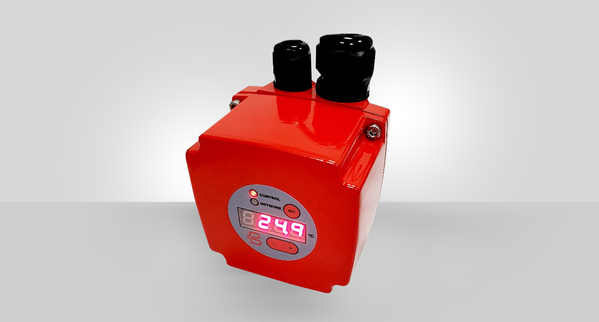
IoT-Enabled Thermal Controller
OVERVIEW & GOAL
A smart thermal controller module, powered by a processor based on the Arm Cortex-M4 was chosen for a new IoT product line to connect to the client’s IoT service. The controller is marketed as an embedded controller for third-party OEM clients and is provided directly as a modular, standalone, branded
controller product. The product helps reduce energy costs and the carbon intensity of energy-consuming devices by exploiting state-of-the-art schedule optimization algorithms with real-time data from cloud-based data services.
The product must conform to strict safety standards (e.g. EN60730) as well as cybersecurity, and real-time performance, and must support regular OTA software updates. The integrity, availability, and reliability of the unit is a paramount requirement, with unit and development costs a very close priority to address the target market. The product must avoid obsolescence issues that arise in a rapidly changing energy management environment.
CHALLENGE
The perennial expectations of “good, fast, and cheap” product development are particularly challenging for this project as there could be no compromise on the performance or core features involving connectivity, control, and intelligence to form a unique product.
Technical challenges included:
— Rapid pre-hardware development to aid concurrent engineering of cloud IoT services.
— Portability and extensibility from hardware specification changes during the project.
— Functional and performance validation with prototype and production hardware.
— Post-deployment maintainability for long-life-cycle support in data-driven environments.
The development team had to understand the capabilities of the inxware platform and development environment, and make use of the best practice software development constructs it encourages.
SOLUTION & BENEFITS
A pre-configured inxware runtime was available for the NXP Kinetis chipset, which supported:
— MQTT, TLS, HTTP server
— MODBUS-RT, GPIO, PWM, ADC, LED display
— Math, String, JSON, flash storage
— OTA firmware & applications
These pre-implemented components use best-in-class libraries for particular chipsets, such as FreeRTOS, Mbed, LWIP, and the NXP SDK. Lucid allowed the application business logic to be developed from day one using the desktop variant of the inxware runtime. Concurrent development on evaluation boards, and subsequently production hardware, was 100% fluid using the no-code environment. Lucid’s hardware-in-the-loop graphical debugger accelerated final optimization with the physical world in which
the product would be deployed.
The bespoke hardware integration was supported using inxware’s super-portable open-source C-code porting environment, where low-level driver tweaks to support production Ethernet PHY chips were quickly established within inxware’s containerized build system.
Read more about our ARM-based projects here.

